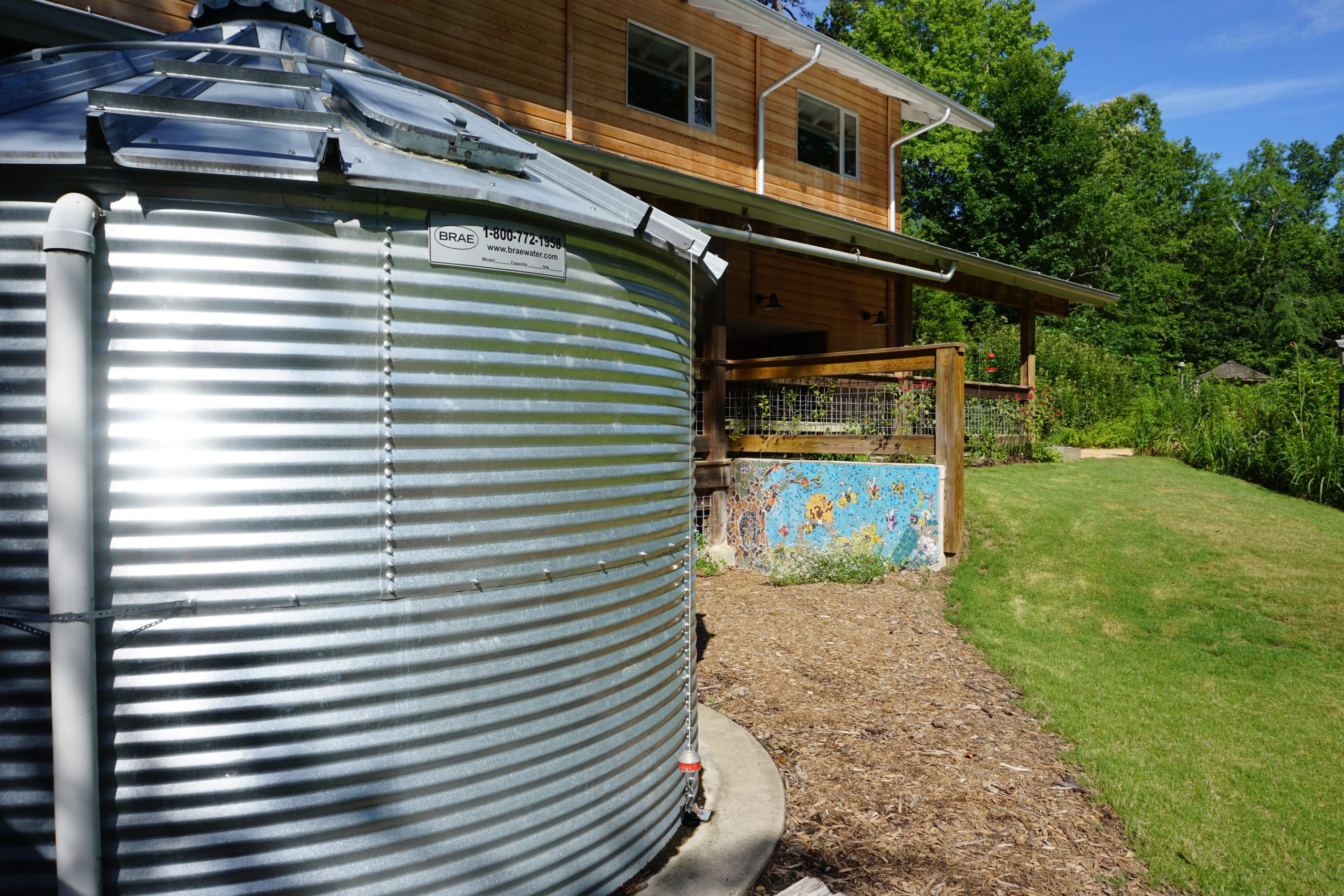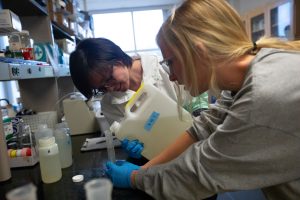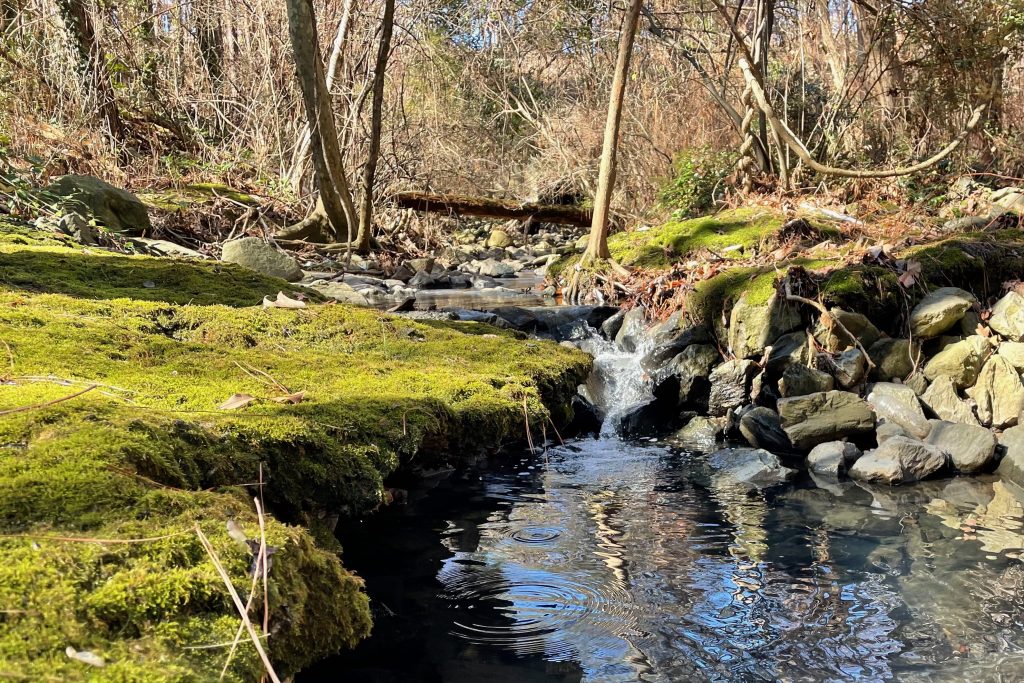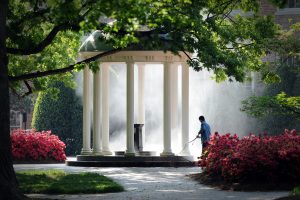Water Plan: Goals & Strategies
Goals
Carolina has set new, more ambitious water goals. These goals include:
- Reduce water footprint: Minimize the amount of water used on campus by reducing total water consumption. Maximize the proportion of non-potable water for campus water use. Reduce the volume, rate, and pollutant load of stormwater runoff.
- Amplify and translate water research: Establish a network for water-related research to be shared with students, campus operations, and local and regional sustainability partners.
Strategies
Many projects have already been implemented at UNC-Chapel Hill. Therefore, a large part of the water strategy is to maintain or expand these successful projects. Sustainable water also includes high-impact water research which is being conducted across the University.

Strategy 1: Source Water Management
Using non-potable water as a source for activities other than consumption, contact, and research increases the amount of potable water available to UNC-Chapel Hill and the larger community. Source water management also means maintaining high quality water in campus infrastructure as well as reducing the volume, rate, and pollutant load of our runoff which becomes a source for other communities.
1a. Increase Non-Potable Water Use
Status: The cooling tower make-up water for these main campus plants is comprised of reclaimed water from OWASA.
Status: All-natural turf athletic fields operated by UNC-Chapel Hill’s Athletics Department are now served with non-potable water for irrigation.
Status: UNC-Chapel Hill design guidelines call for dual-plumbing systems in new buildings when and where feasible so that non-potable water can/could be used for toilet flushing. The recently renovated Mary Ellen Jones building was double plumbed.
Status: UNC-Chapel Hill currently supplies non-potable water for landscape irrigation to a number of sites. Some are served by reclaimed water from OWASA (e.g. Genome Sciences Building, Tomkins Chilled Water plant). Others are served by harvested rainwater (e.g. Rams Head Plaza, Hanes Hall, Koury Oral Health, North Carolina Botanical Garden).
Status: As part of a water master planning effort, UNC-Chapel Hill is investigating the feasibility of switching existing potable water irrigation sites to non-potable water.
Status: As part of a water master planning effort, UNC-Chapel Hill is working to improve operational efficiency for existing rainwater harvesting systems to increase the percentage of time they are operational.
Status: UNC-Chapel Hill intends to meter any new systems installed.
1b. Maintain Stormwater Quality
Minimizing stormwater runoff pollution including nutrients, sediment, and discharge improves water quality for users within the watershed.
Status: Three stormwater wetlands, one at Finley Fields North, one at the Outdoor Education Center and behind WUNC-FM near the Friday Center, have been added to campus as measures to increase bioretention of free nutrients in runoff and improve downstream water quality. A fourth stormwater wetland is underway at the NC-54 Park and Ride Lot near the Friday Center. The Battle Grove Regenerative Stormwater Conveyance project was completed in 2016. The University also implemented bioretention cells, 8 green roofs, and 14 acres of permeable pavement installations.
Status: UNC-Chapel Hill continues to perform preventive maintenance of stormwater drains.
Strategy 2: Campus Water Use
Improving efficiency reduces the overall amount of water needed to operate the University. It is also important to maintain infrastructure to ensure that water is always available.
Status: UNC-Chapel Hill’S building design guidelines call for at least a 30% improvement in water efficiency beyond code for new buildings and 20% improvement for existing building retrofits.
Status: UNC-Chapel Hill is working to set up mechanisms to use this data for water savings
Status: UNC-Chapel Hill is working with OWASA to determine the capabilities of AguaVista.
Status: UNC-Chapel Hill is working through ideas with OWASA to increase water efficiency on campus using Green Revolving Fund.
Status: An ongoing resiliency study of the potable water distribution network present on campus seeks to highlight risks, areas of needed improvement, and existing resiliency measures already in place.
Research Strategies
 UNC-Chapel Hill has tremendous strength in water research distributed throughout campus. With the launch of the Sustainable Carolina framework, the commitment to connect sustainability activities to research at the university was redoubled. Cutting edge research addressing critical societal issues occurs in centers, institutes, and departments in multiple colleges and schools. Strategies have been identified to ensure that relevant research on campus informs our sustainability practice, share our insights gained from research with our local and regional sustainability partners, and highlight and amplify the value research brings to sustainability practice on campus and beyond.
UNC-Chapel Hill has tremendous strength in water research distributed throughout campus. With the launch of the Sustainable Carolina framework, the commitment to connect sustainability activities to research at the university was redoubled. Cutting edge research addressing critical societal issues occurs in centers, institutes, and departments in multiple colleges and schools. Strategies have been identified to ensure that relevant research on campus informs our sustainability practice, share our insights gained from research with our local and regional sustainability partners, and highlight and amplify the value research brings to sustainability practice on campus and beyond.
Status: In progress.
Status: Ongoing.
Status: Ongoing.


